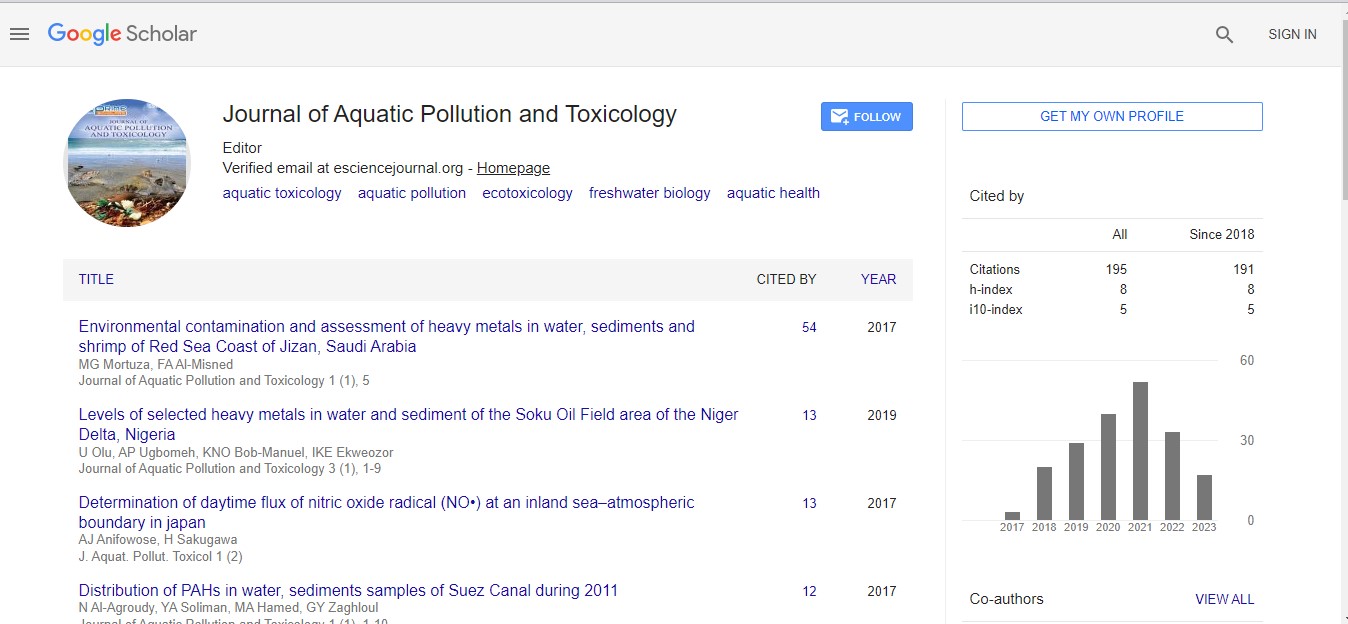Short Communication - (2024) Volume 8, Issue 3
The Promise of Rainwater: Harnessing Nature’s Resource
Yuuki Sato*
Department of Aquatic Science, Doshisha University, Japan
*Correspondence:
Yuuki Sato,
Department of Aquatic Science, Doshisha University,
Japan,
Email:
Received: 02-Sep-2024, Manuscript No. IPJAPT-24-21319;
Editor assigned: 04-Sep-2024, Pre QC No. IPJAPT-24-21319 (PQ);
Reviewed: 18-Sep-2024, QC No. IPJAPT-24-21319;
Revised: 23-Sep-2024, Manuscript No. IPJAPT-24-21319 (R);
Published:
30-Sep-2024, DOI: 10.21767/2581-804X-8.3.22
Introduction
Rainwater harvesting conserves water, reduces runoff, and
replenishes groundwater. Rainwater, often seen as a nuisance, is
increasingly recognized for its potential as a valuable resource.
It falls from the sky as precipitation and, if managed correctly,
can be a sustainable and eco-friendly alternative to traditional
water sources. This article explores the benefits of rainwater,
its collection and uses, and the innovations transforming
how we harness this natural resource. Rainwater is simply
water that condenses from clouds and falls to Earth. It is part
of the hydrological cycle, which also includes evaporation,
condensation, and runoff. When rainwater reaches the ground,
it can either infiltrate into the soil, be absorbed by vegetation,
or run off into rivers and lakes. Traditionally, this runoff
has been seen as a waste, but with modern technology and
growing environmental awareness, its potential is becoming
clearer. Collecting rainwater involves capturing it from rooftops
or other surfaces and directing it into storage containers.
Description
Rain barrels and cisterns are commonly used for this purpose.
The process begins with rain falling on a catchment area, typically
a roof, where it is directed through gutters and downspouts
into a storage tank. Proper filtration is essential to ensure that
the collected water is free of debris and contaminants. The
design and scale of rainwater harvesting systems can vary
widely. The key is to ensure that the storage system is clean
and properly maintained to prevent contamination. Rainwater
has a variety of applications, from residential to industrial uses.
In households, it can be used for irrigation, flushing toilets, and
even drinking, provided it is properly filtered and treated. For
irrigation, rainwater is often preferred due to its low mineral
content compared to tap water, which can be better for plant
health. In some regions, rainwater is used to supplement
municipal water supplies. During periods of drought or in
water-scarce areas, it provides a critical alternative source of
water. Industrial applications also benefit from rainwater, as it
can be used in cooling systems or for processes that require
large volumes of water. Utilizing rainwater offers several
environmental and economic advantages. Environmentally, it
reduces the demand on traditional water sources, which can
help alleviate the stress on local water supplies and reduce the
risk of over-extraction. Rainwater harvesting can also reduce
runoff, which helps prevent soil erosion and decreases the
risk of flooding. Economically, harvesting rainwater can lower
water bills by reducing the amount of water purchased from
municipal suppliers [1-4].
Conclusion
Additionally, it can reduce the need for extensive storm water
management systems, leading to cost savings for municipalities
and property owners alike. Innovations include smart rainwater
systems equipped with sensors and automated controls that
optimize water use and storage. These systems can monitor
water levels, detect contamination, and even integrate with
weather forecasts to manage water supply more effectively.
In urban planning, green roofs and permeable pavements are
designed to capture and use rainwater, reducing runoff and
improving the sustainability of buildings. Such innovations
are part of a broader trend towards integrating natural
systems into urban environments to create more resilient
and sustainable cities. Rainwater, once viewed as merely a
temporary inconvenience, is emerging as a valuable resource
with significant environmental and economic benefits. As
technology and awareness continue to evolve, rainwater
harvesting will likely become an even more integral part of our
water management strategies.
Acknowledgement
None.
Conflict Of Interest
The author declares there is no conflict of interest in publishing
this article.
References
- Litchman E, Klausmeier CA (2008) Trait-based community ecology of phytoplankton. Annu Rev Ecol Evol Syst 39(5): 615â??639.
[Crossref] [Google Scholar]
- Cermeno P, Choucino P, Fernandez CB, Figueiras FG, Maranon E, et al. (2016) Marine primary productivity is driven by a selection effect. Front Mar Sci 3(1): 173.
[Crossref] [Google Scholar]
- Becker BE (2009) Aquatic therapy: Scientific foundations and clinical rehabilitation applications. PM R 1(9):859-72.
[Crossref] [Google Scholar] [PubMed]
- Roostaei M, Baharlouei H, Azadi H, Fragala-Pinkham MA (2017) Effects of aquatic intervention on gross motor skills in children with cerebral palsy: A systematic review. Phys Occup Ther Pediatr 37(5):496-515.
[Crossref] [Google Scholar] [PubMed]
Citation: Sato Y (2024) The Promise of Rainwater: Harnessing Nature’s Resource. J Aquat Pollut Toxicol. 8:22.
Copyright: © 2024 Sato Y. This is an open-access article distributed under the terms of the Creative Commons Attribution License, which permits unrestricted use, distribution, and reproduction in any medium, provided the original author and source are credited.

